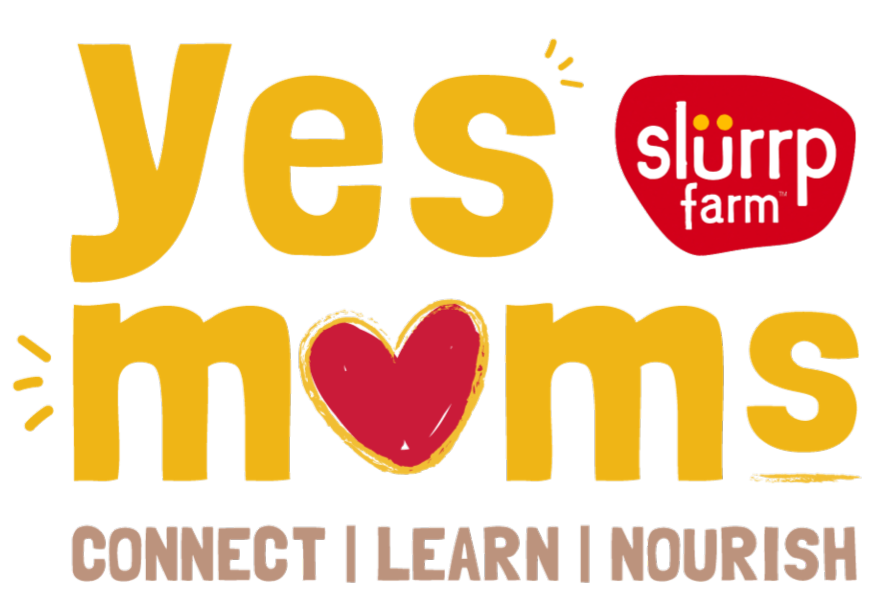
Being a parent is a rewarding journey filled with countless moments of joy and equally countless moments of doubt! One of the most important desires that every parent has is to help their child build a healthy, lifelong relationship with food.
We live in a world where processed foods, added sugars, and preservatives are abundant. So it's natural for you to wonder how you can instill in your baby healthy eating habits and a positive outlook towards real and healthy food. Today, we will explore what it means to have a healthy relationship with food and practical tips to guide your baby toward a lifetime of nutritious and joyful eating experiences.
Understanding Our Relationship with Food
Our relationship with food is our connection with food. It’s the way we think and feel about food. Our childhood experiences play a big role in shaping this relationship with food.
In India, food is also a mainstay of celebrations and family get-togethers. There’s a certain unmatched joy in cooking together and eating together.
Our connection to food and how we feel about it is often formed during childhood; it could be either healthy or unhealthy.
What Does an Unhealthy Relationship with Food Look Like?
An unhealthy relationship with food may involve behaviors such as eating when not hungry, using food to cope with negative emotions, binge eating, a lack of control over portion sizes, and feelings of guilt and shame, especially in terms of weight management. Over a period of time if left unchecked, these behaviors can lead to eating disorders.
These unhealthy behaviors can also influence our children. As parents, we aspire to raise children who approach meals with positivity, in a pressure-free environment, and cultivate an appreciation for the food on their plates.
What Does a Healthy Relationship with Food Look Like?
When we have a healthy relationship with food, we are able to choose to eat or not eat food in a balanced and responsible way. We are able to listen to our bodies, our physical and emotional needs. We eat to honor our body’s hunger and fullness cues. It’s not like we eat food because it’s available or in front of us. Neither do we eat with a mindset that food can fix our mood! There is no judgment, shame, guilt, or fear with regard to food. We avoid overeating or feeling out of control when it comes to food.
We look at food not just as fuel; it’s also a source of celebration and connection with loved ones, offering sustenance, pleasure, and joy.
The Major Role That Childhood Experiences Play
Many of our food-related experiences are shaped in childhood. Positive or negative associations with food can influence our mindset, attitudes, emotions, and behaviors as we grow. As parents, we may recall moments from our own childhood, such as being coerced to eat when not hungry or force-fed. These early experiences can create lasting aversions to certain foods or to even “eating” itself.
On the other hand, positive food associations can stem from family traditions, celebrations, and memorable meals with loved ones. These positive or negative experiences contribute to our overall relationship with food, which we pass on to our children.
Nurturing Babies to Create a Positive Relationship with Food: Tips for Parents
As parents, we serve as role models for our children, shaping their outlook on food and mealtimes. Research suggests that children are more likely to eat and enjoy foods they have been exposed to multiple times.
Here's how you can encourage your baby to develop a healthy and loving relationship with food from a young age:

1) Cook and prepare food together: Get your child involved in the kitchen or in grocery shopping. Young children are naturally curious and eager to participate in adult activities like cooking and shopping. Take advantage of these opportunities to introduce them to new experiences and emotions.
If you bring your child along for grocery shopping, let them interact with vegetables, feel different textures, and explore the array of aromas and colors. When you're preparing meals or cooking, you can seat them nearby (at a safe distance from the cooking area or any hot appliances).
These moments provide an excellent chance for your child to develop essential life skills and cultivate a positive relationship with food.

2) Avoid using food as a reward or punishment: Avoid using food as a means of reward or punishment. This is a common practice among many parents because it really is an easy way to encourage children to obey or complete tasks.
For example, you may tell your child, "If you finish all your vegetables and dal-rice, you can have ice cream afterward." While this may seem like a harmless incentive, it instills the idea that they "must" consume a particular food to earn a reward. This approach can create negative associations with the "must-eat" foods, essentially turning them into a form of "punishment."
Similarly, the favored treat becomes a "reward," making it even more enticing. This imbalance in food perceptions can disrupt children's eating habits, as they eagerly anticipate the reward food, often a sugary item, more than the main meal.
3) Lead by example: Model healthy eating behaviors to your child instead of merely telling them to do it, especially during family meals. Include your baby at the dinner table during family mealtimes. When your baby observes the rest of the family enjoying the same foods on their plates, they're learning valuable eating habits.
Model good eating behaviors for your baby's benefit. Eat mindfully, savor your food, chew slowly, and interact with the family members, and most certainly with your baby.
Research reveals that children who are part of family meals tend to develop healthier eating behaviors and are more inclined to try foods they see their parents and family members enjoying. These children also tend to have higher self-esteem and a lesser risk of future eating disorders.
While we understand this may not always be possible, the more frequently you can do so, the greater the opportunity to model positive eating habits for your children.
Also, preferably serve the same food to everyone in the family, including your baby, rather than offering separate meals. Babies are perceptive and will quickly catch on to the consistency in family meals, reinforcing the positive eating behaviors you're cultivating together. Click here for a quick recap on how you can modify the meals cooked for the family for your baby.
4) Respect your child's autonomy: Understand your role as a parent in the feeding relationship. Your responsibility is to offer nutritious food for your baby. But, it's not your duty to dictate how much they should eat; that's your child's job.
This principle, known as responsive feeding, focuses on avoiding pressure to consume specific foods in particular quantities. The goal is to empower your child with autonomy, a fundamental aspect of building a positive relationship with food.
Building this trust is crucial. When you are confident in your child's ability to eat as much as their body requires and desires, it encourages your baby to trust their own choices regarding hunger and fullness. This approach ensures that mealtime remains a positive experience, devoid of pressure, force-feeding, or food restrictions, preventing mealtime from becoming a battleground between parents and children.

5) Create a stress-free mealtime environment: Strive to create a positive, pleasant, and relaxed mealtime environment. Stress and pressure can lead to unhappy eating experiences and reduced appetite in children. Research shows that when children eat less, the first thing parents should check is the amount of pressure they’re feeling at mealtime.
Mealtimes should be casual, enjoyable, and an opportunity for bonding with your child. Avoid fixating on the number of bites they take. Be less focused on your child's eating and instead enjoy and appreciate your own meal.
This approach fosters a safe and accepting environment where children can be themselves and make food choices autonomously. Rather than obsessing over the quantity consumed, consider playing their favorite songs, singing, or engaging in conversation. When mealtimes are fun, children are automatically eager to participate.
6) Avoid labeling foods as good or bad: Avoid labeling healthy foods as "good" and sugary foods as "bad." We don't want children to feel restricted or develop fear, judgment, or shame related to certain foods. Instead, try using the terms "always food" and "sometimes food." For instance, "khichdi is an always food," while "ice-cream is a sometimes food."
"Always" foods include fruits, vegetables, dals, rice, millets, pulses, grains, and curd, which are part of our regular daily diet.
"Sometimes" foods include cakes, candy, cookies, chocolates, ice-creams, waffles, etc.
These positive labels avoid indirectly classifying children as "good" or "bad" based on their food choices and help them develop healthier associations with both nutritious and occasional treats.

7) Offer a variety: Introduce a diverse range of flavors, textures, and foods during your baby's first two years. Research indicates that when children are exposed to a broad variety of foods at a young age, they are more likely to maintain these preferences as they grow. Provide ample time and opportunities for them to embrace these diverse food choices.

8) Embrace messy exploration: Allow your toddler to get messy with their food. It's perfectly fine if they squish or smear their food. Through playfulness, they learn to develop familiarity with different textures and form neurological connections that allows them to eat and accept more types of food.
Encourage them to explore, prod, and interact with their food. This stage of exploration is unique to their early years, and remember the mess is temporary!
Eating isn't just about consuming food; it's also a sensory experience for babies. Engaging all their senses by smelling, touching, feeling, and seeing food helps contribute to their overall perception of food.

9) Include fruits and vegetables in every meal: Offer a fruit or vegetable serving with every meal or snack. Ultimately, you want to nurture a positive, long-term relationship between your baby and vegetables/fruits. You can do this by consistently including a serving of vegetables or fruits in each of their meals. This not only introduces them to various foods but also encourages a healthy food habit.
10) Avoid fixating on your baby’s weight: A baby’s weight is discussed right from birth, when relatives may comment that the baby is chubby or thin. Such comments can be both stressful and infuriating for mothers. A “weight” focus can have long-term effects on how the child looks at themselves and the relationship they develop with food as they grow up.
This focus on weight is not even directly related to actual body weight. Instead, it relates to dietary choices, food habits, and rigid food rules. Constant weight-focused discussions can lead to disordered eating patterns and may lead to a risk of eating disorders in the future.
When a parent focuses too much on their child’s weight, they will not be able to help them develop a good relationship with food because the parent will be constantly worried about what and how much the child is eating. This can make mealtimes unpleasant, can increase mealtime pressure, and parents may no longer be objective or responsive during mealtimes.
Instead, focus on your baby's overall well-being. Encourage them to celebrate their connection with food. As babies grow, their weight will naturally adjust, and should you have any concerns, consulting your pediatrician is always a wise course of action.

11) Encourage mindful eating: The pace of feeding and eating should be slow so that your child gets the opportunity to experience the taste, flavors, texture, and color of the food. This teaches children to eat mindfully, slow down, engage with the food, and avoid distractions like phones or tablets. During meals, discuss simple food facts and the seasons. Create a positive bond with food by talking about where it comes from, like plants and animals, and the people who provide it. Teach children to appreciate food and understand the role of farmers in growing it.
Help kids see the bigger picture by discussing how food is connected to the whole planet. Talk about feeling hungry, full, and satisfied after a good meal. Describe how your baby's tummy feels when it's hungry or full, so they can learn to listen to their body's signals. As much as you enjoy talking to your baby, be mindful that they’re not distracted by your talks. This helps them focus on the food, its flavors and textures and smells!
Creating a positive and healthy relationship with food starts early in a child's life. You play a key role in helping babies develop a favorable relationship. But do remember that some foods may take longer for your child to accept than others. So be consistent and patient!


















